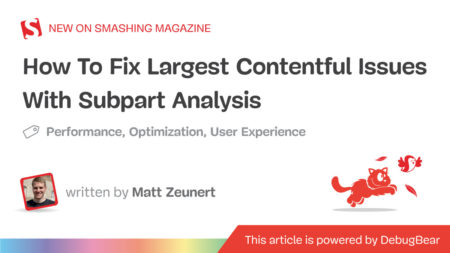With AI making its way into code and infrastructure, it’s also becoming important in the area of data search and retrieval.
I recently had the chance to discuss this with Steve Kearns, the general manager of Search at Elastic, and how AI and Retrieval Augmented Generation (RAG) can be used to build smarter, more reliable applications.
SDT: About ‘Search AI’ … doesn’t search already use some kind of AI to return answers to queries? How’s that different from asking Siri or Alexa to find something?
Steve Kearns: It’s a good question. Search, often called Information Retrieval in academic circles, has been a highly researched, technical field for decades. There are two general approaches to getting the best results for a given user query – lexical search and semantic search.
Lexical search matches words in the documents to those in the query and scores them based on sophisticated math around how often those words appear. The word “the” appears in almost all documents, so a match on that word doesn’t mean much. This generally works well on broad types of data and is easy for users to customize with synonyms, weighting of fields, etc.
Semantic Search, sometimes called “Vector Search” as part of a Vector Database, is a newer approach that became popular in the last few years. It attempts to use a language model at data ingest/indexing time to extract and store a representation of the meaning of the document or paragraph, rather than storing the individual words. By storing the meaning, it makes some types of matching more accurate – the language model can encode the difference between an apple you eat, and an Apple product. It can also match “car” with “auto”, without manually creating synonyms.
Increasingly, we’re seeing our customers combine both lexical and semantic search to get the best possible accuracy. This is even more critical today when building GenAI-powered applications. Folks choosing their search/vector database technology need to make sure they have the best platform that provides both lexical and semantic search capabilities.
SDT: Virtual assistants have been using Retrieval Augmented Generation on websites for a good number of years now. Is there an additional benefit to using it alongside AI models?
Kearns: LLMs are amazing tools. They are trained on data from across the internet, and they do a remarkable job encoding, or storing a huge amount of “world knowledge.” This is why you can ask ChatGPT complex questions, like “Why the sky is blue?”, and it’s able to give a clear and nuanced answer.
However, most business applications of GenAI require more than just world knowledge – they require information from private data that is specific to your business. Even a simple question like – “Do we have the day after Thanksgiving off?” can’t be answered just with world knowledge. And LLMs have a hard time when they’re asked questions they don’t know the answer to, and will often hallucinate or make up the answer.
The best approach to managing hallucinations and bringing knowledge/information from your business to the LLM is an approach called Retrieval Augmented Generation. This combines Search with the LLM, enabling you to build a smarter, more reliable application. So, with RAG, when the user asks a question, rather than just sending the question to the LLM, you first run a search of the relevant business data. Then, you provide the top results to the LLM as “context”, asking the model to use its world knowledge along with this relevant business data to answer the question.
This RAG pattern is now the primary way that users build reliable, accurate, LLM/GenAI-powered applications. Therefore, businesses need a technology platform that can provide the best search results, at scale, and efficiently. The platform also needs to meet the range of security, privacy, and reliability needs that these real-world applications require.
The Search AI platform from Elastic is unique in that we are the most widely deployed and used Search technology. We are also one of the most advanced Vector Databases, enabling us to provide the best lexical and semantic search capabilities inside a single, mature platform. As businesses think about the technologies that they need to power their businesses into the future, search and AI represent critical infrastructure, and the Search AI Platform for Elastic is well-positioned to help.
SDT: How will search AI impact the business, and not just the IT side?
Kearns: We’re seeing a huge amount of interest in GenAI/RAG applications coming from nearly all functions at our customer companies. As companies start building their first GenAI-powered applications, they often start by enabling and empowering their internal teams. In part, to ensure that they have a safe place to test and understand the technology. It is also because they are keen to provide better experiences to their employees. Using modern technology to make work more efficient means more efficiency and happier employees. It can also be a differentiator in a competitive market for talent.
SDT: Talk about the vector database that underlies the ElasticSearch platform, and why that’s the best approach for search AI.
Kearns: Elasticsearch is the heart of our platform. It is a Search Engine, a Vector Database, and a NoSQL Document Store, all in one. Unlike other systems, which try to combine disparate storage and query engines behind a single facade, Elastic has built all of these capabilities natively into Elasticsearch itself. Being built on a single core technology means that we can build a rich query language that allows you to combine lexical and semantic search in a single query. You can also add powerful filters, like geospatial queries, simply by extending the same query. By recognizing that many applications need more than just search/scoring, we support complex aggregations to let you summarize and slice/dice on massive datasets. On a deeper level, the platform itself also contains structured data analytics capabilities, providing ML for anomaly detection in time series data.
The post Elastic’s Search AI impacts employee experience, overall efficiency appeared first on SD Times.
Source: Read MoreÂ



